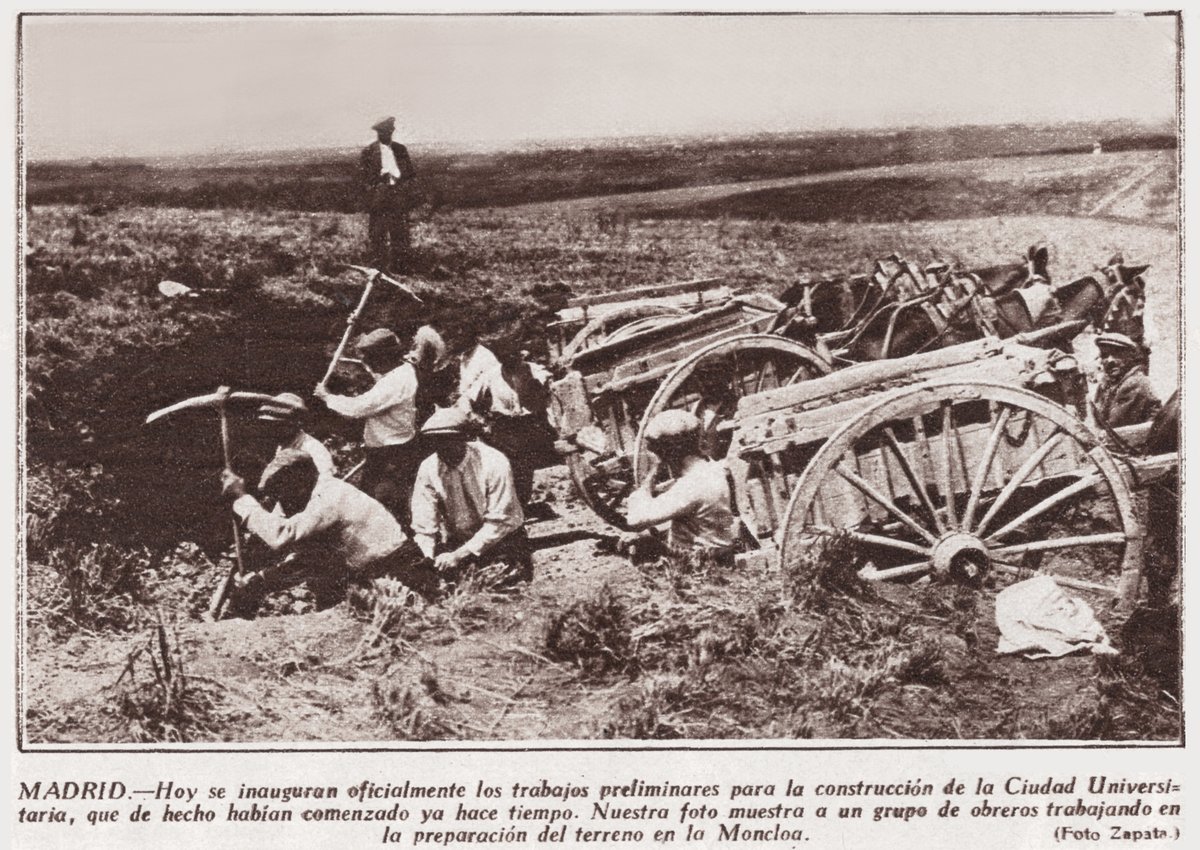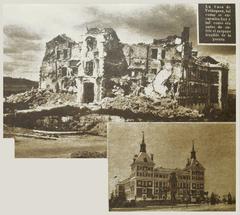
Ciudad Universitaria Mexico City: Visiting Hours, Tickets, and Historical Sites Guide
Date: 14/06/2025
Introduction
Ciudad Universitaria (CU), the flagship campus of the Universidad Nacional Autónoma de México (UNAM), is a UNESCO World Heritage site and a cornerstone of Mexico City’s cultural, educational, and architectural landscape. Known for its fusion of mid-20th-century modernist design with Mexican artistry, CU is home to iconic landmarks, renowned murals, and lush green spaces set atop ancient volcanic rock. This guide provides comprehensive information on visiting hours, ticketing, accessibility, highlights, and practical tips to ensure an enriching and seamless visit for architecture enthusiasts, history buffs, students, and cultural explorers alike (UNESCO; World Heritage Site; UNAM Official).
Table of Contents
- Historical Background and UNESCO World Heritage Status
- Cultural and Educational Impact
- Visitor Information
- Highlights for Visitors
- Frequently Asked Questions (FAQ)
- Practical Tips and Suggested Itineraries
- Conclusion
- Additional Resources
Historical Background and UNESCO World Heritage Status
Origins and Development
Founded in 1910, UNAM’s vision for a modern educational campus materialized between 1949 and 1952, as Mexico City expanded rapidly. Designed by a team of over 60 architects, engineers, and artists—including Mario Pani, Enrique del Moral, and Carlos Lazo—Ciudad Universitaria was constructed on the southern volcanic landscape known as Pedregal de San Ángel. The design ingeniously incorporates local volcanic stone, reflecting both modernist aspirations and a deep connection to Mexico’s geological and pre-Hispanic roots (World Heritage Site; Architectuul).
Architectural and Artistic Significance
CU stands as a masterwork of international modernist architecture intertwined with Mexican cultural motifs. Organized around a central esplanade, its celebrated structures include the Central Library, Olympic Stadium, and Rectory Tower. The campus is particularly renowned for its monumental murals by Diego Rivera, David Alfaro Siqueiros, and Juan O’Gorman, whose mosaic on the Central Library tells the story of Mexico from ancient to modern times. The integration of art and architecture, seen in both exterior murals and sculpture parks, makes CU unique among university campuses (UNESCO; Alan x el Mundo).
UNESCO Inscription and Preservation
In 2007, Ciudad Universitaria was inscribed as a UNESCO World Heritage Site for its dynamic fusion of Mesoamerican motifs, modernist design, innovative use of materials (notably volcanic stone and reinforced concrete), and the seamless integration of art, architecture, and landscape. The campus has retained its original function and character, with ongoing conservation efforts to address urban and environmental pressures (UNESCO).
Cultural and Educational Impact
UNAM is Latin America’s largest university, with more than 350,000 students as of 2025. Ciudad Universitaria serves as a vibrant hub for learning, artistic creation, and public engagement. Facilities such as the Olympic Stadium, University Cultural Center, museums, and botanical garden support a dynamic, inclusive environment where academic, cultural, and recreational life converge (World Heritage Site).
Visitor Information
Visiting Hours and Admission
- Campus Outdoor Areas: Open daily from 8:00 AM to 6:00 PM.
- Museums and Cultural Venues: Generally Tuesday–Sunday, 10:00 AM to 5:00/6:00 PM (closed Mondays; hours may vary by venue).
- Admission: Entry to outdoor spaces—including plazas, gardens, and murals—is free. Museums (such as MUAC and Universum) charge a nominal fee (30–50 MXN); some offer free entry on specific days (Alan x el Mundo).
Tickets and Guided Tours
- Campus Access: Free for outdoor and public areas.
- Museums: Tickets can be purchased onsite or online.
- Guided Tours: Available through UNAM’s cultural offices and external operators; advance booking is recommended, especially for English-language tours (Tiqets).
Accessibility
- Main attractions (Central Library, Rectorate Tower, museums, and cultural centers) are wheelchair accessible.
- Some outdoor areas, such as the Sculpture Space and Ecological Reserve, have uneven volcanic terrain and may be less accessible.
- Accessible restrooms and shuttle services (Pumabus) are available in major areas.
Special Events and Photography
- CU hosts year-round cultural events, concerts, exhibitions, and sports activities.
- Photography is permitted in most outdoor areas and public spaces; observe restrictions in museums and during events.
- Recommended spots include the Central Library, Sculpture Space, Olympic Stadium, and botanical garden.
Getting There and Nearby Attractions
- Metro: Line 3 (Universidad station) provides direct access.
- Metrobus: Line 1 stops near the campus.
- Pumabus: Free internal shuttle service connects key points.
- Biking: Dedicated bike lanes and racks are available.
- Parking: Limited; public transport is advised during peak times or large events.
- Nearby Attractions: Coyoacán (Frida Kahlo Museum, Plaza Hidalgo), San Ángel (Saturday art market), Xochimilco (canals), and Viveros de Coyoacán park (Mexico Desconocido; Mexico City Government).
Highlights for Visitors
Central Library (Biblioteca Central)
- Designed by Juan O’Gorman, adorned with the world’s largest exterior mosaic mural.
- Visiting hours: Monday–Friday 9:00 AM–6:00 PM; weekends 10:00 AM–4:00 PM.
- Free entry; exterior accessible to all.
Rectorate Tower (Torre de Rectoría)
- Modernist architecture by Mario Pani and Enrique del Moral, featuring David Alfaro Siqueiros murals.
- Murals visible from outside.
Olympic Stadium (Estadio Olímpico Universitario)
- Landmark modernist stadium built from volcanic rock for the 1968 Olympics.
- Diego Rivera’s mural “La Universidad, la familia, y el deporte” decorates the exterior.
- Guided tours available via official request.
Sculpture Space (Espacio Escultórico)
- Open-air installation of geometric sculptures atop volcanic rock, created by leading Mexican artists.
- Open daily, free entry.
University Cultural Center (Centro Cultural Universitario, CCU)
- Houses theaters, concert halls, and galleries (Sala Nezahualcóyotl, MUAC).
- Hosts concerts, exhibitions, and performances throughout the year.
Botanical Garden (Jardín Botánico)
- Showcases over 1,600 native Mexican plants.
- Open daily, free access.
Universum: Science Museum
- Interactive museum with hands-on exhibits for all ages.
- Open Tuesday–Sunday, 9:00 AM–5:00 PM; admission ~50 MXN.
Ecological Reserve (Reserva Ecológica del Pedregal de San Ángel)
- 237 hectares of protected volcanic landscape with endemic species.
- Ideal for birdwatching and environmental education.
Frequently Asked Questions (FAQ)
Q: What are the visiting hours for Ciudad Universitaria?
A: Outdoor areas are open 8:00 AM–6:00 PM daily. Museums operate 10:00 AM–5:00/6:00 PM, Tuesday–Sunday.
Q: Do I need tickets to visit?
A: Most outdoor areas are free. Museums and special exhibitions may require a ticket.
Q: Are guided tours available?
A: Yes. Book in advance via official channels or external platforms for tours focused on architecture, murals, and history.
Q: Is CU wheelchair accessible?
A: Major attractions are accessible; some outdoor terrain is uneven.
Q: Can I take photographs?
A: Yes, in most public and outdoor spaces. Note restrictions inside museums.
Q: How do I get to Ciudad Universitaria?
A: Metro Line 3 (Universidad station), Metrobus Line 1, Pumabus shuttle, and bicycle lanes serve the campus.
Practical Tips and Suggested Itineraries
Best Times to Visit:
- Early mornings or weekends are quieter. Weekdays can be busy with academic activity.
What to Bring:
- Comfortable walking shoes, sun protection, water bottle, and a campus map.
Safety:
- CU is generally safe by day. Remain aware of surroundings and avoid isolated areas after dark.
Food and Amenities:
- Cafeterias and food stalls offer local cuisine. Restrooms, water fountains, and ATMs are found in major buildings.
Half-Day Itinerary
- Arrive via Metro Line 3.
- Explore Central Library and Rectorate Tower murals.
- Walk to Sculpture Space and Botanical Garden.
- Lunch on campus or in Coyoacán.
Full-Day Experience
- Guided architectural tour in the morning.
- Visit MUAC and attend a concert or event at CCU.
- Evening stroll in Coyoacán or San Ángel.
Conclusion
Ciudad Universitaria is more than a university campus—it’s a living monument to Mexico’s modernist vision, cultural richness, and artistic heritage. Visitors can enjoy free access to extraordinary public spaces, affordable entry to museums, and a plethora of cultural events. With improved accessibility, guided tours, and excellent transport connections, CU is an essential stop for anyone seeking to experience the spirit of Mexico City. For the best experience, consult official resources, use digital tools like the Audiala app, and consider exploring surrounding neighborhoods for a deeper dive into the city’s vibrant culture (UNESCO; UNAM Official).
Additional Resources
- UNESCO World Heritage listing
- World Heritage Site Guide
- Alan x el Mundo Visitor Guide
- Tiqets Tickets and Tours
- Mexico Desconocido Guide
- Official UNAM website
- Mexico City Government Info
- Architectuul CU Profile
Plan your visit today, download the Audiala app for guided tours and updates, and explore more fascinating destinations with us!











































































































































































